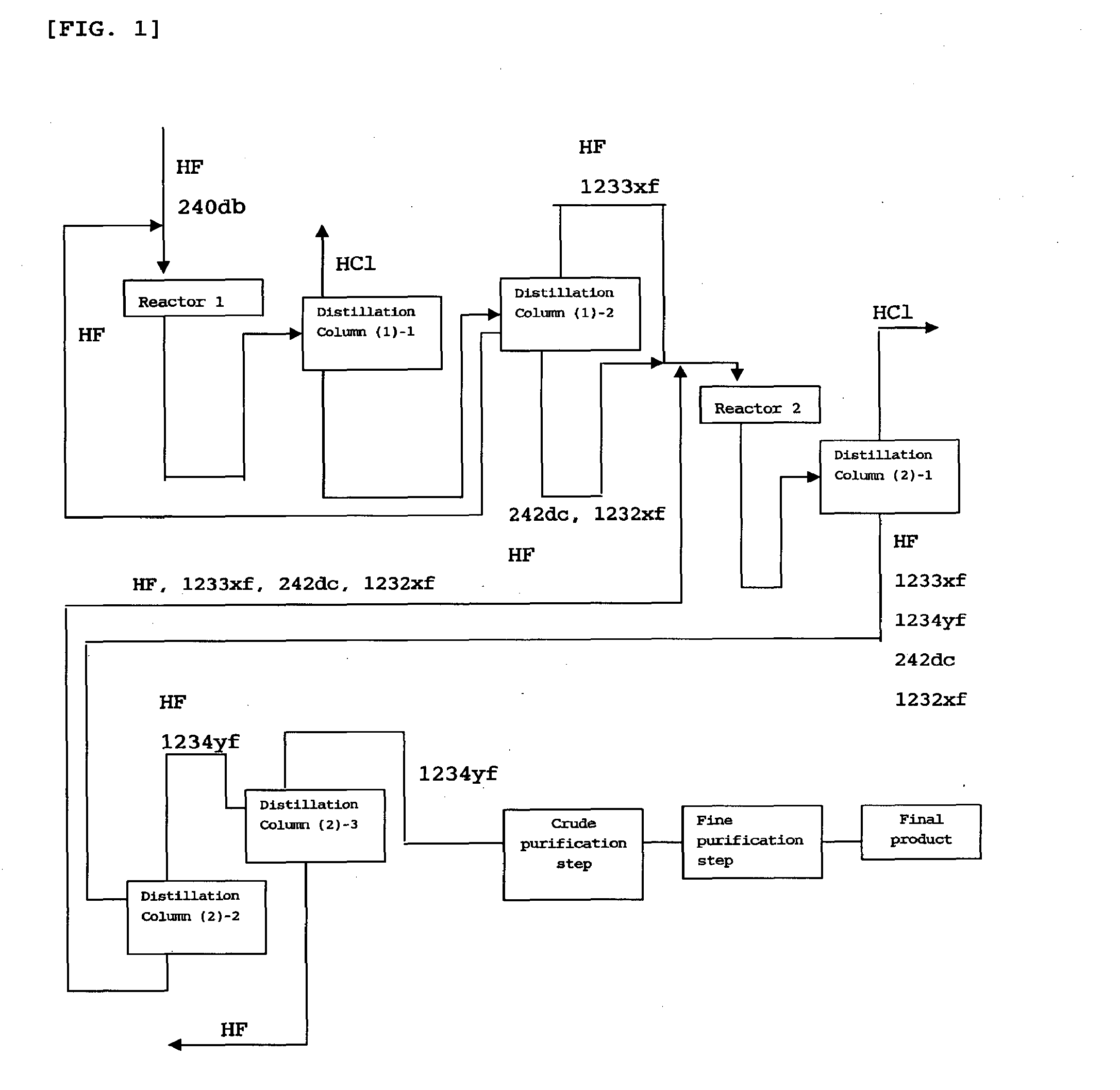Process for producing 2,3,3,3-tetrafluoropropene
a technology of tetrafluoropropene and tetrafluoropropene, which is applied in the field of process for producing 2, 3, 3, 3tetrafluoropropene, can solve the problems of inability to complete the recovery of refrigerants, the diffusion of these refrigerants due to leakage, and the increase of global warming of refrigerants, etc., and achieves suppressing the deterioration of catalysts and high selectivity
- Summary
- Abstract
- Description
- Claims
- Application Information
AI Technical Summary
Benefits of technology
Problems solved by technology
Method used
Image
Examples
example 1
(1) First Reaction Step
[0077]A ½-inch pipe made of Inconel (inner diameter: 1.02 cm) equipped with a ⅛-inch thermometer protection tube made of Inconel (outer diameter: 0.32 cm) was used as a reaction tube and was packed with nickel beads (diameter: 3 mm) that were inactive to the reaction. The packed nickel bead bed length was 19.5 cm, and the space volume of the packed bed of nickel beads was 7.5 cm3.
[0078]To this reaction tube, 1,1,1,2,3-pentafluoropropane (HCC-240db) and anhydrous hydrogen fluoride were continuously supplied at a rate of 2.4 cc / min (flow rate at 0° C. and 0.1 MPa) and at a rate of 47 cc / min (flow rate at 0° C. and 0.1 MPa), respectively. The temperature inside the reaction tube was set at 400° C. and the pressure inside the reaction tube was set at atmospheric pressure (0.1 MPa).
[0079]The molar ratio of HF to HCC-240db was 20, and the residence time (V / Fo), which is the ratio of the space volume (V) of the packed bed of nickel beads to the total flow rate (Fo) o...
PUM
| Property | Measurement | Unit |
|---|---|---|
| reaction temperature | aaaaa | aaaaa |
| reaction temperature | aaaaa | aaaaa |
| residence time | aaaaa | aaaaa |
Abstract
Description
Claims
Application Information
 Login to View More
Login to View More - R&D
- Intellectual Property
- Life Sciences
- Materials
- Tech Scout
- Unparalleled Data Quality
- Higher Quality Content
- 60% Fewer Hallucinations
Browse by: Latest US Patents, China's latest patents, Technical Efficacy Thesaurus, Application Domain, Technology Topic, Popular Technical Reports.
© 2025 PatSnap. All rights reserved.Legal|Privacy policy|Modern Slavery Act Transparency Statement|Sitemap|About US| Contact US: help@patsnap.com

